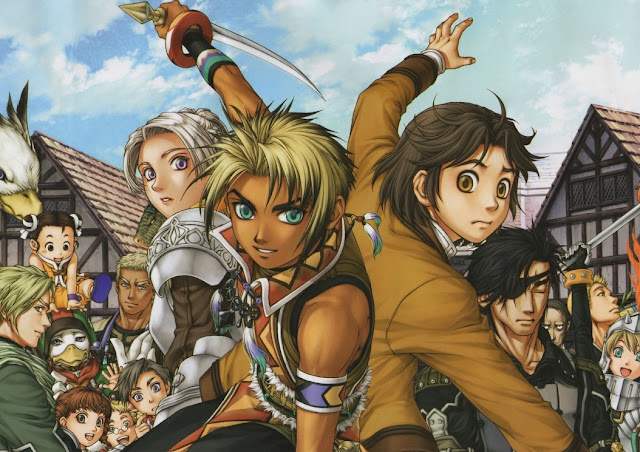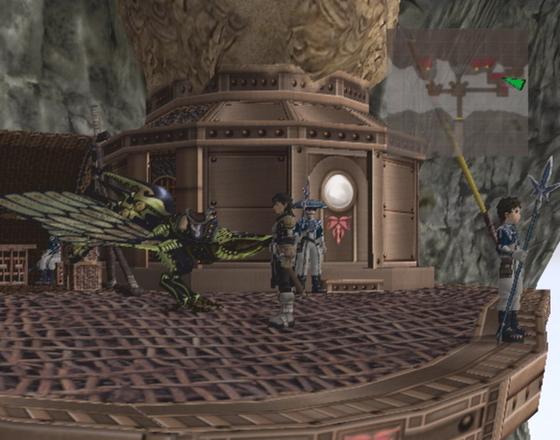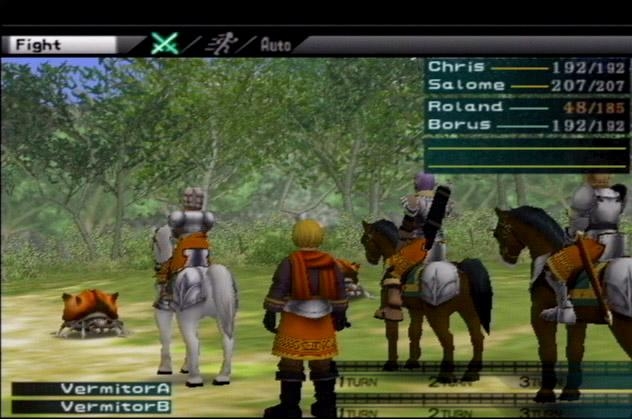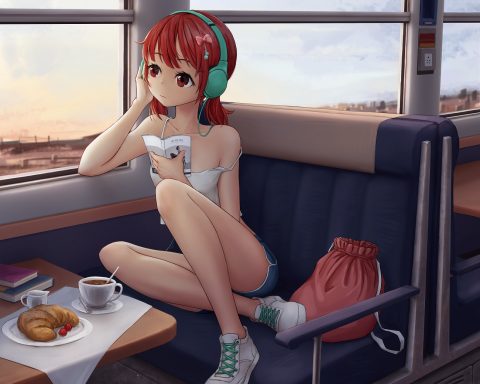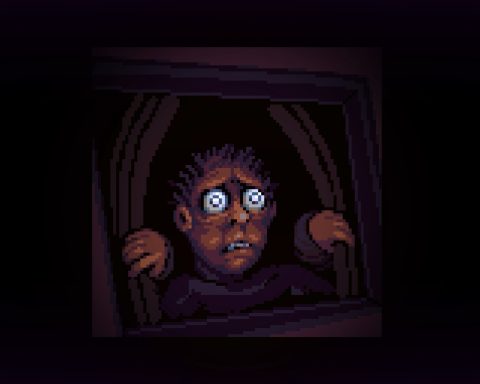There are many different RPG series over the years that have garnered rabid fan support. Arguably my favourite has been the Suikoden franchise. I spent so many hours with what seemed like an overwhelmingly large cast of characters, yet the stories almost always spoke to me on a more personal level, with characters who managed to stand out against the substantial crowds developers tend to create with these titles. Years after playing the third entry in the series, I had a chance to play it once again and Suikoden III is every bit as endearing to me now as it was then.
Related reading: Another Konami PlayStation game that scrubs up beautifully on PlayStation 3 is Gradius.
The PlayStation 2 really helped usher in a different era in RPG gaming. Each console provided more power for the developers to try and take advantage of, but the shift in Suikoden III to a 3D world was a substantial one for the series that really helped to bring a new visual life to the world. Graphics were not the only innovation however, as the team behind Suikoden III really took a chance in breaking the story up into what really amounted to three stories brought together to create a single narrative.
This kind of split storytelling has been tried in plenty of other games over the years, but almost never has it been handled this expertly. Following Chris, Geddoe and Hugo through their intertwined adventures could have gone very wrong. Often in attempts to split the narration like this, you wind up with a lot of scenes and areas that start to feel like padding, because you are trekking through the same areas and the same overall story notes, just from slightly different perspectives. This approach can be interesting at times, but often it becomes redundant as well.

This Trinity Sight System is used as a mechanic to help structure the storyline. One thing I like about most of the Suikoden games is how well they leverage politics as part of their narrative. Like Game of Thrones, this series is about more than action. There is no absolutely ‘right side’ to this story. I love that aspect of the plot, because so often times in games you are playing one side, and it is assumed that because this is the side your character is on, it is the proper side of the conflict. However, many of the most interesting villains in any book, film and video game are those who feel that they are doing the right thing – that the ends justify their means. Because the storyline is handled from these different angles, we gain perspectives to the story that would otherwise likely be lacking if we only followed a single central character.
There are structural aspects to the game that help to enforce this notion of three lead characters. One is that you can only progress so far in the story with a character before you need to shift over to another. This is actually handled in fairly open fashion, giving you plenty of flexibility to play the characters in which order you like, but given the frequently intertwining nature of the tale, it makes sense that you can only advance the plot with one character so far before doing the same with another of the three primary characters.
The combat also helps to reinforce this notion, since there is enough variety in the battle system to make each party feel unique. Some characters simply interact well with others. Suikoden has always thrown a virtual boatload of characters to be discovered, recruited and used. Suikoden III is no different, boasting 108 potential characters. Considering you can only use a half dozen in your parties, obviously many of them get left behind. The key is finding characters who have skills that compliment one another on the field of battle. Obviously some are more useful than others. I think every Suikoden game has a handful of characters who are more or less ‘just there’ – their skills too lacking to really make them viable options on the battlefield when compared to others.
That being said, there is a fantastic element of trial and error that makes constructing parties a lot of fun. This was always especially true of when I had two party members I really liked, but their skill sets were more overlapping than complementary, meaning I had to leave one behind. The tactics within combat was pretty hit or miss at the time, as I recall. It was quite different from its predecessors, and I recalled it taking some time to adjust to. Maybe because I am going back to the game for a second time after all of these years, or perhaps because I have played so many more RPGs since then, but I had no difficulty with the combat’s tactics elements this time around and found it comfortable and entertaining.
I was reminded of some of the game’s other growing pains when playing it again, however. Perhaps the most notable was the lack of proper camera control. Moving from a 2D to 3D world was likely quite the daunting task by then, and I had forgotten about how the lack of camera control was annoying.
Being that this is a PS Classic and not an HD remake, there have been no improvements made to the game. This is still the same original title I played years ago. As such the graphics have not seen any touching up, and while the anime style cinematics still get the job done, the rest of the world has not aged quite so gracefully from a visual standpoint. That being said, music tends to stand the test of time better, and I enjoyed Suikoden III’s soundtrack immensely. This is a long game in a large world, but many of the memories were instantly familiar upon hearing them again all of these years later.
However, the heart of any RPG for me is a combination of the storyline and the characters. Suikoden III provided plenty of characters, and some were more memorable than others given the sheer size of the roster. That being said, the lead characters and the way that their stories were woven into the narrative of Suikoden III made this a unique game both for the series and among RPGs, and reminded me yet again why it still has such a warm place in my heart all of these years later.
– Nick H.
US Editor

